
How to Use 12v 7ah Battery: Examples, Pinouts, and Specs
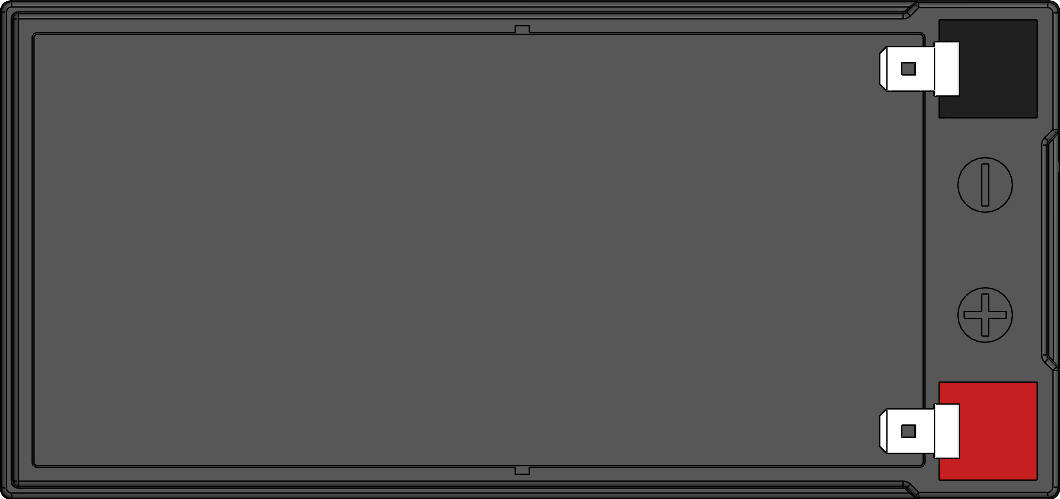
 Design with 12v 7ah Battery in Cirkit Designer
Design with 12v 7ah Battery in Cirkit Designer12V 7Ah Rechargeable Lead-Acid Battery Documentation
1. Introduction
The 12V 7Ah Rechargeable Lead-Acid Battery is a sealed, maintenance-free battery designed to provide reliable power for a wide range of applications. With a nominal voltage of 12 volts and a capacity of 7 amp-hours (Ah), this battery is ideal for use in backup power systems, uninterruptible power supplies (UPS), emergency lighting, alarm systems, and small-scale renewable energy setups. Its robust design ensures durability and consistent performance, making it a popular choice for both hobbyists and professionals.
Common Applications:
- Uninterruptible Power Supplies (UPS): Provides backup power during outages.
- Emergency Lighting Systems: Ensures continuous lighting in critical situations.
- Alarm and Security Systems: Powers sensors, alarms, and control panels.
- Solar Power Systems: Stores energy for off-grid or backup use.
- Hobby Electronics: Powers small projects, such as Arduino-based systems or robotics.
- Portable Devices: Used in portable power packs or small electric vehicles.
2. Technical Specifications
The following table outlines the key technical details of the 12V 7Ah battery:
| Parameter | Specification |
|---|---|
| Nominal Voltage | 12V |
| Capacity | 7Ah (7,000mAh) |
| Chemistry | Sealed Lead-Acid (SLA), AGM type |
| Maximum Charging Voltage | 14.4V - 14.7V |
| Float Charging Voltage | 13.5V - 13.8V |
| Maximum Discharge Current | 105A (for 5 seconds) |
| Recommended Discharge Current | ≤ 2.1A (for optimal lifespan) |
| Operating Temperature | -15°C to 50°C (5°F to 122°F) |
| Dimensions (L x W x H) | |
| Weight | ~2.1kg (4.63 lbs) |
| Terminal Type | F1 or F2 Faston Tabs |
| Cycle Life | ~200-300 cycles (at 50% depth of discharge) |
Pin Configuration and Terminal Description
The 12V 7Ah battery typically features two terminals for electrical connections:
| Terminal | Description |
|---|---|
| Positive (+) | Connects to the positive side of the circuit. Usually marked in red. |
| Negative (-) | Connects to the negative side of the circuit. Usually marked in black. |
3. Usage Instructions
Connecting the Battery in a Circuit
Identify the Terminals:
- Locate the positive (+) and negative (-) terminals on the battery.
- Ensure proper polarity to avoid damage to the battery or connected devices.
Use Proper Connectors:
- Use Faston connectors (F1 or F2) or compatible spade terminals for secure connections.
- Ensure the connectors are clean and free of corrosion.
Charging the Battery:
- Use a compatible lead-acid battery charger with the correct voltage and current ratings.
- Set the charger to the recommended charging voltage (14.4V - 14.7V for cyclic use or 13.5V - 13.8V for float use).
- Avoid overcharging, as it can damage the battery and reduce its lifespan.
Discharging the Battery:
- Connect the battery to your load, ensuring the current draw does not exceed the recommended discharge current (2.1A for optimal lifespan).
- Avoid deep discharges below 10.5V, as this can permanently damage the battery.
Safety Precautions:
- Do not short-circuit the terminals.
- Avoid exposing the battery to extreme temperatures or direct sunlight.
- Handle with care to prevent physical damage or leaks.
Example: Using the Battery with an Arduino UNO
The 12V 7Ah battery can be used to power an Arduino UNO via a voltage regulator or a DC-DC converter to step down the voltage to 5V. Below is an example circuit and code for powering an Arduino UNO with the battery.
Circuit Diagram:
- Connect the positive terminal of the battery to the input of a 12V-to-5V DC-DC converter.
- Connect the output of the converter to the Arduino UNO's 5V and GND pins.
Sample Code:
// Example code for Arduino UNO powered by a 12V 7Ah battery
// This code blinks an LED connected to pin 13
void setup() {
pinMode(13, OUTPUT); // Set pin 13 as an output for the LED
}
void loop() {
digitalWrite(13, HIGH); // Turn the LED on
delay(1000); // Wait for 1 second
digitalWrite(13, LOW); // Turn the LED off
delay(1000); // Wait for 1 second
}
4. Troubleshooting and FAQs
Common Issues and Solutions
| Issue | Possible Cause | Solution |
|---|---|---|
| Battery not charging | Charger not compatible or faulty | Use a charger designed for 12V SLA batteries. |
| Battery discharges too quickly | Excessive load or aging battery | Reduce load or replace the battery if it has degraded. |
| Terminals corroded or loose | Poor maintenance or environmental factors | Clean terminals and ensure secure connections. |
| Battery voltage drops below 10.5V | Over-discharge or faulty load | Recharge immediately and avoid deep discharges. |
| Battery overheats during use | Overcharging or excessive discharge current | Check charger settings or reduce load. |
Frequently Asked Questions (FAQs)
Can I use this battery for solar power systems?
- Yes, the 12V 7Ah battery is commonly used in small-scale solar setups. Ensure you use a charge controller to regulate charging and discharging.
How long will the battery last on a full charge?
- The runtime depends on the load. For example, a 1A load will last approximately 7 hours (7Ah ÷ 1A).
Can I connect multiple batteries together?
- Yes, you can connect batteries in series (to increase voltage) or parallel (to increase capacity). Ensure all batteries are of the same type and charge level.
How do I store the battery when not in use?
- Store the battery in a cool, dry place. Charge it every 3-6 months to prevent self-discharge and sulfation.
Is the battery safe to use indoors?
- Yes, the sealed design prevents leaks and minimizes gas emissions, making it safe for indoor use.
5. Conclusion
The 12V 7Ah Rechargeable Lead-Acid Battery is a versatile and reliable power source for a wide range of applications. By following the usage instructions and best practices outlined in this documentation, you can maximize the battery's performance and lifespan. Whether you're powering an Arduino project, a security system, or a solar setup, this battery is a dependable choice for your energy needs.
Explore Projects Built with 12v 7ah Battery
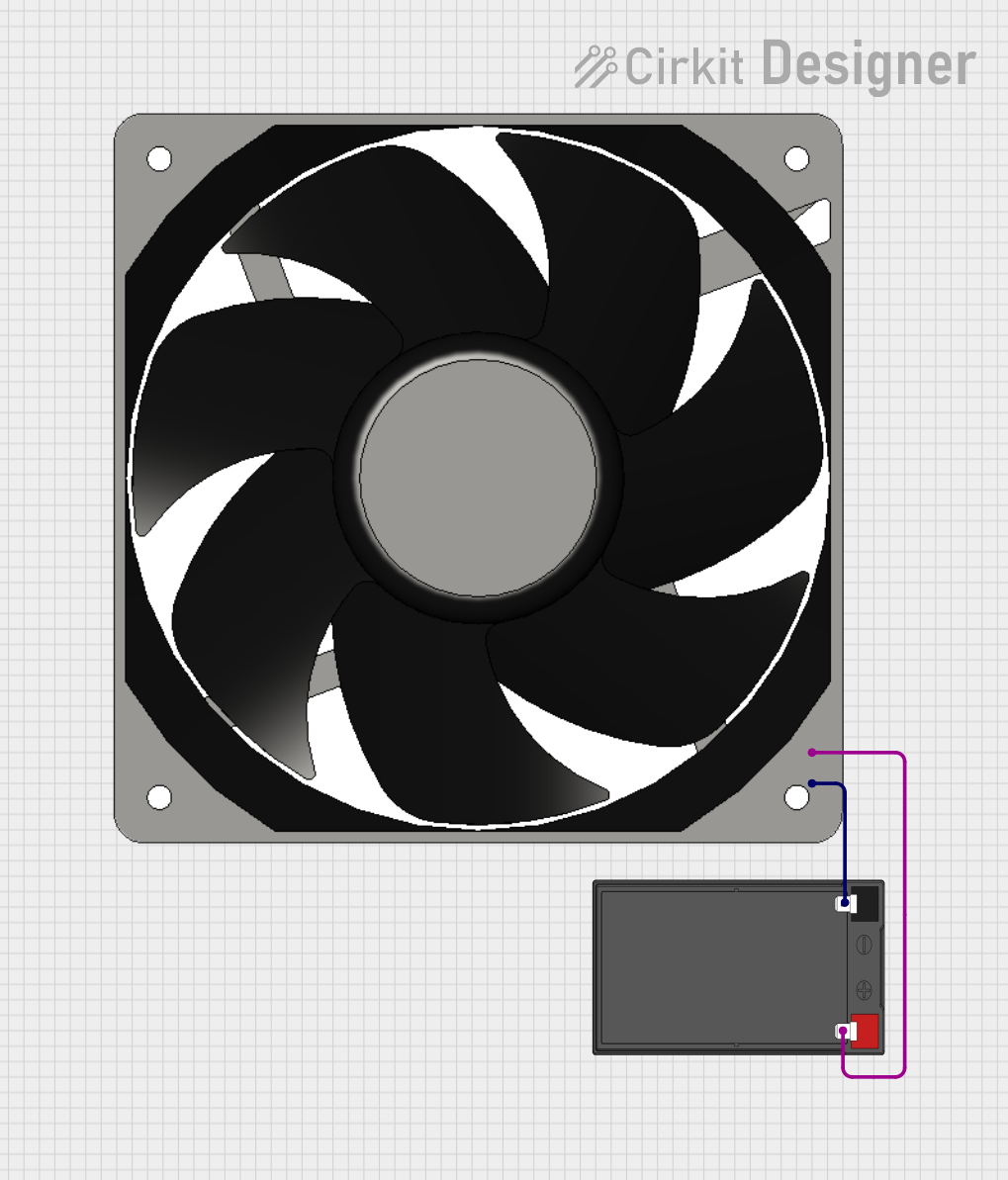
 Open Project in Cirkit Designer
Open Project in Cirkit Designer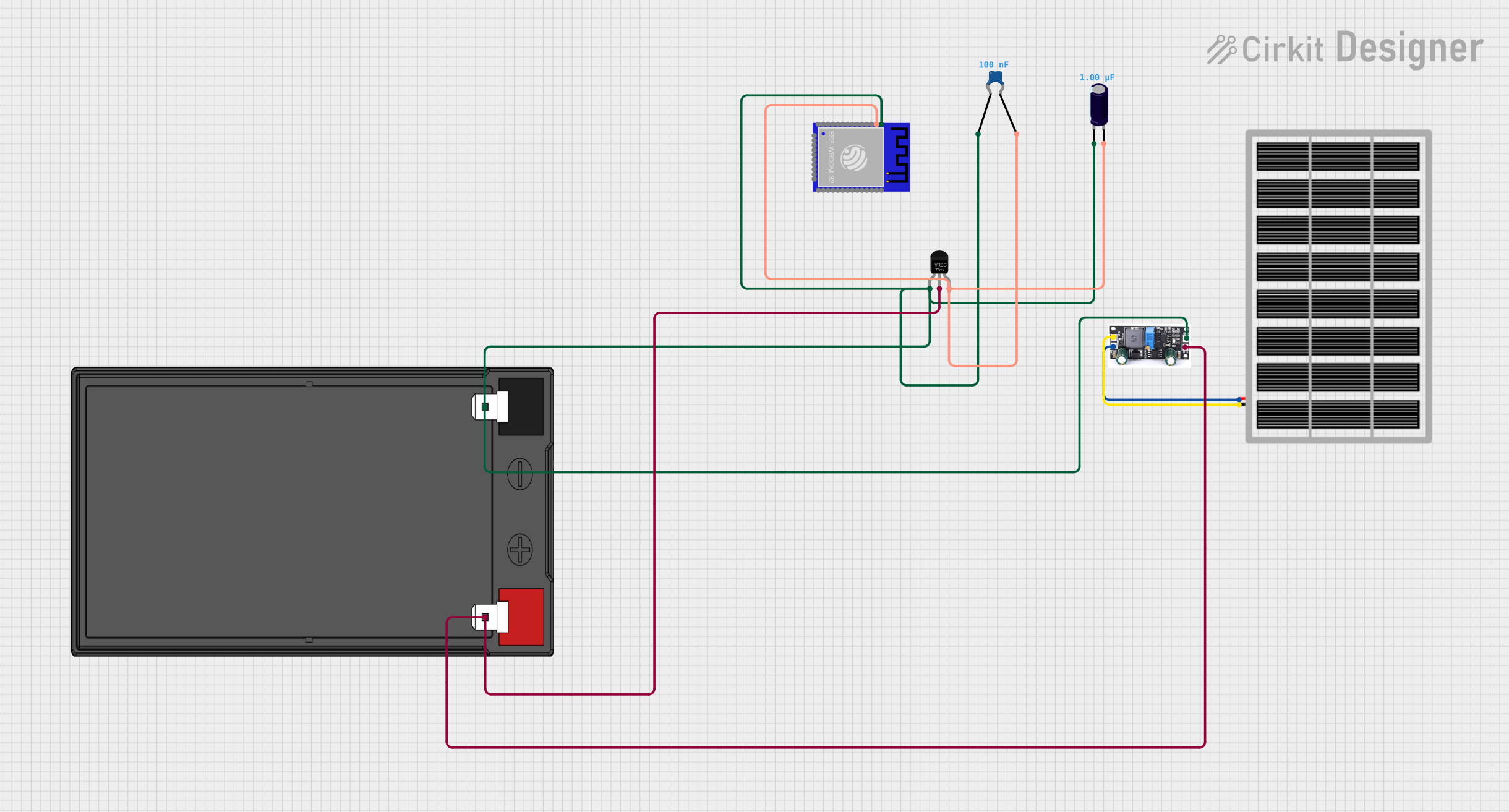
 Open Project in Cirkit Designer
Open Project in Cirkit Designer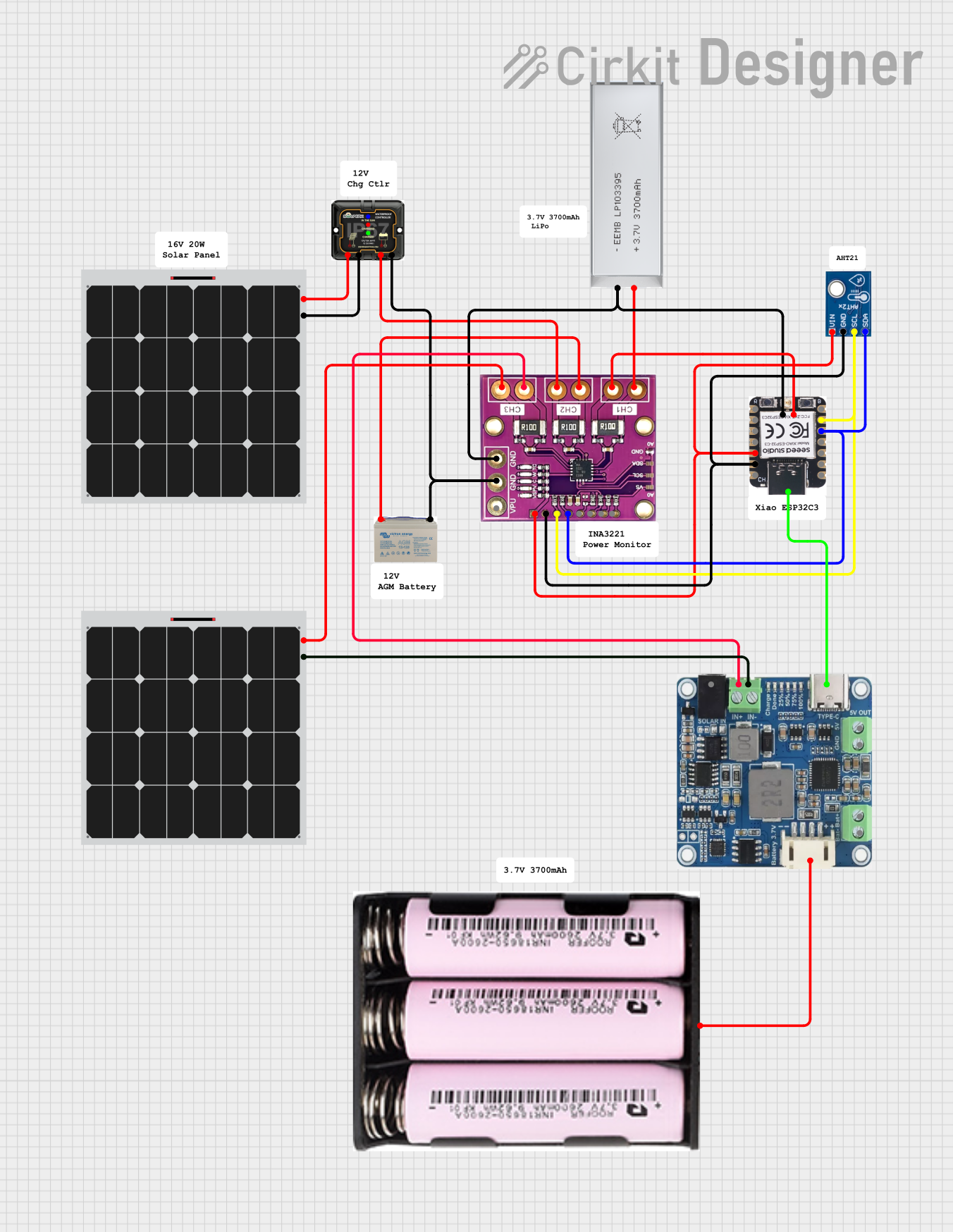
 Open Project in Cirkit Designer
Open Project in Cirkit Designer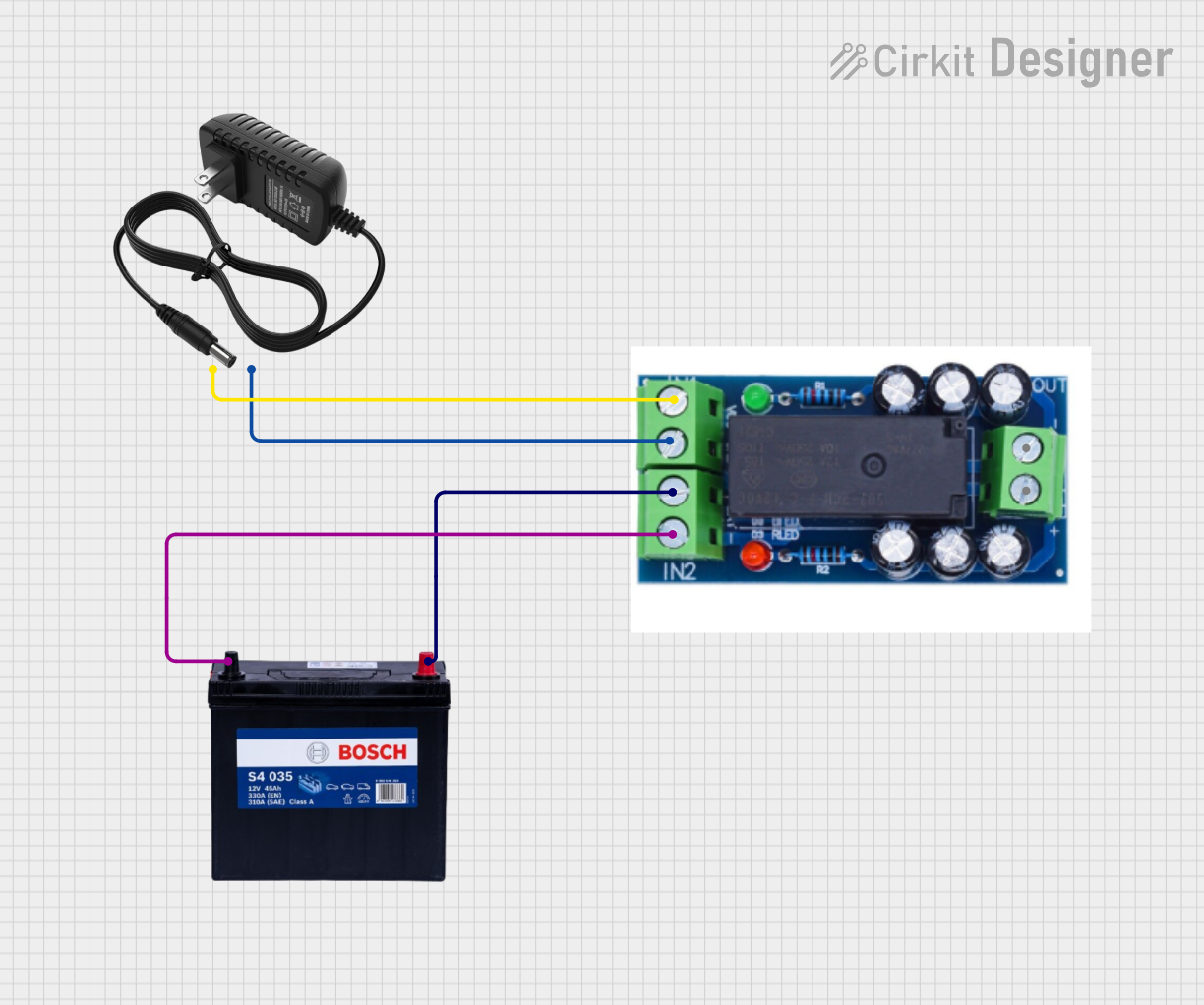
 Open Project in Cirkit Designer
Open Project in Cirkit DesignerExplore Projects Built with 12v 7ah Battery

 Open Project in Cirkit Designer
Open Project in Cirkit Designer
 Open Project in Cirkit Designer
Open Project in Cirkit Designer
 Open Project in Cirkit Designer
Open Project in Cirkit Designer
 Open Project in Cirkit Designer
Open Project in Cirkit Designer